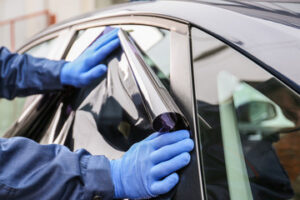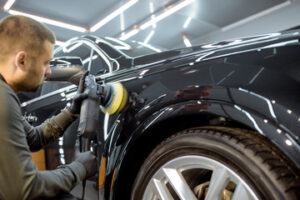While it might seem easy to perform the window tinting process on your own, it is a complicated process that takes patience and the right tools. You have to be patient while measuring and cutting, and there are many steps involved. You also need to be aware of the restrictions that are put on the window tinting job after you get it done. You might want to hire a professional to save yourself the headache and the hassle. Here are some steps that you should follow to have a professionally tinted car.

The first step in window tinting is to clean the glass. This requires the use of a special window cleaner without ammonia and a soft cloth or a rubber squeegee. Foam cleaners are best for cleaning the windows because they do not streak and are ammonia-free. Remember to avoid using any kind of blades or abrasive tools as these may scratch the window film. You must also keep the window film clean, or it will be easily scratched.
While standard car windows block a significant amount of ultraviolet light, window tint can improve the protection. It can also protect your car’s interior from fading due to exposure to the sun’s harmful rays. This is especially beneficial if you drive a vehicle in a sunny region. Having a window tint on your car will help keep the interior of your car looking its best. Sunlight will fade the colors on your dashboard and upholstery, and even leather seats will become stiff over time.
Another option is metalized tint. This film is scratch-resistant and adds strength to windows, making them less likely to break. However, metallic tints may interfere with radio and GPS signals. Another option is a hybrid film, which is a blend of metal particles and dyes. It is made of several dyed layers and a thin layer of metal, usually titanium. Depending on where you live, the film that you select should be durable and not interfere with equipment signals.
Before choosing a window tint, you must know the percentage of light that will pass through the window film. The percentage of light that can pass through the film is called the VLT. Using a 50 percent VLT will prevent 50% of the sun’s rays from passing through the window, while 20% will block up to 80% of outside light. When choosing window tint, you should remember that the higher the percentage of VLT, the darker your car will appear.
When you have window tinting installed in your car, you will not only protect your car from break-ins but your family as well. Thieves are more likely to break into cars with glass windows that contain valuable items. With a dark window, thieves will have difficulty spotting the valuables inside. As a result, you’ll save money on fuel. Window tinting also helps your car’s fuel efficiency, reducing your gas consumption.
The same goes for window shading. During summer, driving can be very uncomfortable, as the interior is unbearably hot. The heat can also make you ill, causing sunburn and headaches. It’s even worse if you have a small child with you. Window tinting is one solution to this problem. There are many benefits to both, but many people don’t know which is the better option. Let’s take a closer look at both options.
What are the benefits of window tinting? Besides helping you reduce the amount of heat that the sun can cause in your car, it can protect your upholstery from the damage of UV rays. Furthermore, tinting can also keep the interior cool by blocking out glare from other vehicles’ headlights. Deep window tinting can also increase security and privacy by making it more difficult for thieves to see inside your vehicle. If you’re looking for a more personal experience, you’ll want to consult a professional.

